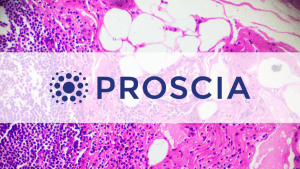
REGENXBIO and Solid Biosciences Take Aim at
Rare Diseases with AAV Gene Therapies
via New Pathway Development Consortium
Rare disease specialist REGENXBIO is partnering with Solid Biosciences to advance AAV gene therapies for rare diseases through an accelerated approval pathway with the U.S. Food and Drug Administration.
Maryland’s REGENXBIO, which is developing gene therapies for Duchenne Muscular Dystrophy and other rare diseases, forged a collaboration with Solid Biosciences to launch the Pathway Development Consortium, which is a multi-stakeholder initiative that aims to identify, develop, expand and maintain pathways to effective therapies for patients diagnosed early in life with rare diseases.
To support the mission, the two companies released a new white paper dubbed “Draft Framework for AAV Gene Therapy Development.” That paper outlines different categories of AAV gene therapies that can be applied for use to target underlying monogenetic changes. Not only has the paper identified gene therapies that could be applied to different diseases, report also proposes new approaches that will provide the best evidence for accelerated approval from the FDA.
In order to achieve its goals, the PDC aims to bring together a broad and diverse group of stakeholders from the rare disease and AAV gene therapy communities to discuss the needs of the patients battling rare diseases and examine meaningful scientific and policy solutions.
The Pathway Development Consortium (PDC) held a roundtable discussion earlier this year to focus on DMD, a rare form of muscular dystrophy being targeted by REGENXBIO. DMD impacts about one in 5,000 boys per year across the globe. The disease causes a progressive loss of muscle strength attributable to a loss of a protein called dystrophin, which normally protects muscle fibers from breaking down. The company is completing an Investigational New Drug application that will pave the way for human trials of RGX-202, which uses the company’s propriety NAV AAV8 vector to deliver a gene to muscle cells that encodes for microdystrophin, a shortened and functional form of the dystrophin protein.
The PDC roundtable discussion included more than 120 attendees from the Duchenne patient community, industry, academia and the FDA. During the discussion, the consortium focused on finding a path forward for meaningful clinical endpoints in clinical trials. The first white paper issued by the PDC focused on AAV gene therapies aimed at DMD. There are currently several treatments on the market from DMD, including those from Sarepta Therapeutics and one from NS Pharma. The approved treatments are all exon skipping treatments, meaning the therapies allow for a skipping of the exons that cause the mutation.
Kenneth T. Mills, president and chief executive officer of REGENXBIO, said the consortium has the potential to “bring together the diverse perspectives in the rare disease community with the interest of the patient at the forefront.”
In addition to its involvement with the PDC, REGENXBIO also joined forces with 14 other biopharma companies, agencies and government organizations to launch the Bespoke Gene Therapy Consortium, which has a mission to accelerate the development of gene therapies for the 30 million Americans who suffer from a rare disease. Similar to work being conducted by the PDC, the Bespoke Consortium aims to improve understanding of the basic biology of a common gene delivery vector known as the adeno-associated virus
REGENXBIO’s NAV Technology Platform, a proprietary adeno-associated virus gene delivery platform, consists of exclusive rights to more than 100 novel AAV vectors. The company has not yet won regulatory approval for an in-house developed gene therapy, but its platform was used in the development of Novartis’ Zolgensma, a gene therapy for spinal muscular atrophy.
Solid Biosciences CEO Ilan Ganot added that they founded the PDC along with REGENXBIO because of a shared vision to treat patients in the AAV community. Ganot and Mills said they hold a belief that the collaboration can “meaningfully guide how AAV-based gene therapy treatments can be more rapidly made available to patients.”
Ganot added that it is important to maintain a regular dialog with the FDA to seek guidance and support.
Peter Marks, director of the FDA’s Center for Biologics Evaluation and Research, touted the importance of “broad stakeholder engagement” to facilitate and expedite the development of AAV gene therapies for rare diseases. Marks said the FDA looks forward to seeing the fruits of the PDC’s efforts to bring promising gene therapies to rare disease patients.
“After a long history of building public-private collaborations throughout my career at FDA, I have seen firsthand the impact that can be made when all stakeholders come together to create groundbreaking solutions. This draft framework proposed by the PDC is an innovative approach to facilitate the development and regulatory approval of important AAV gene therapies,” said Rachel Sherman, president at Rachel Sherman Partners and former Principal Deputy Commissioner at the FDA.
The PDC is actively seeking feedback from key stakeholders on this framework at [email protected].




